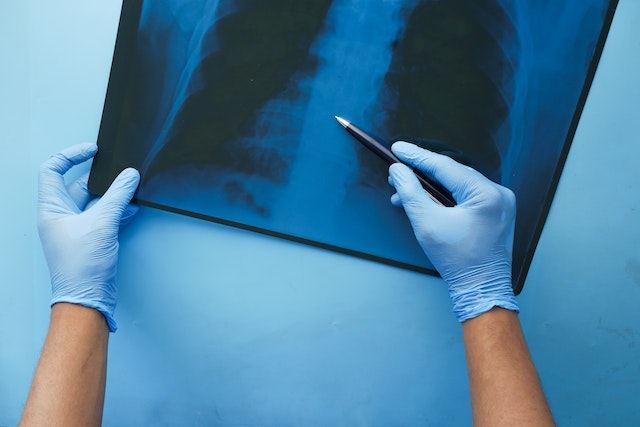Vertebral Compression Fractures

A compression fracture consists of a small break in the vertebra (the bones that make up the spine). These fractures happen most often in women over the age of 50. Bones can weaken over time and with osteoporosis, which makes fractures more common. As the breaks continue, the spine may start to collapse and curve. There are many treatment options for a vertebral compression fracture, including braces, medications, rest, and minimally invasive surgery.
A compression fracture is a crack or break in the vertebra. They occur in the vertebral body, which is the rounded and thick part on the front of each of your vertebra. Multiple fractures can cause the spine to weaken and may affect your posture. It often creates a hunched-over appearance.
Most compression fractures happen in the middle of the spine and occur due to osteoporosis. However, tumors or trauma can also result in vertebral compression fractures.
Women who are over the age of 50 have a higher risk of experiencing compression fractures. This is because they are more likely to suffer from osteoporosis. However, as people age, those of all genders are more likely to experience fractures. If you have had a compression fracture already, you are more likely to have another.

A compression fracture can be severe or very mild. In some cases, there may be no symptoms at all. A fracture might be discovered in an X-ray for some other medical need. However, many people do experience some of the symptoms below:
- Back pain, which may occur quickly and be long-lasting. It often lessens when lying down and worsens when walking or standing.
- Trouble controlling the bowels or bladders, but only with severe fractures.
- Decreased flexibility or mobility of the spine, which may make it challenging to bend over or twist.
- Nerve damage and pinched nerves, which cause numbness and tingling in the back and trouble walking.
- A hunched-over appearance.
- Loss of height due to the compression of the vertebra and a curving back.
The treatments for vertebral compression fractures focus on stabilizing the bones of the spine and relieving pain. However, the chosen treatment will vary based on your health and how severe the fracture is. Pain relief medication may be provided, such as NSAIDs, prescription pain relievers, or muscle relaxers.
Certain kinds of back braces can also be used to add an extra layer of support to your vertebra. Since the spine will move less while wearing a brace, this can help relieve some of your pain.
There are also drugs known as bisphosphonates that help with slowing bone loss. They can also prevent fractures while stabilizing the bones. Kyphoplasty or vertebroplasty can also be used. This is a minimally invasive procedure to improve mobility, stabilize the bones, and relieve pain.
Modern Pain Consultants will be in your corner when you are seeking relief from a spinal fracture. Vertebral compression fractures are common and we have treatment options to help you. Reach out to us for a consultation to determine if you have a compression fracture and what should be done to bring you pain relief.

